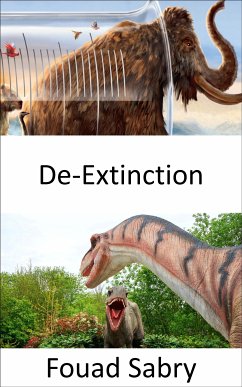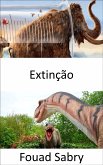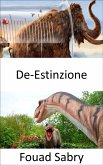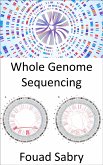What Is De-Extinction
The process of creating an organism that either resembles or really is an extinct species is referred to as de-extinction. There are a few different approaches one might use while carrying out the process of de-extinction. Cloning is the approach that has received the most attention, although genome editing and selective breeding are two other options that have been studied. Techniques quite similar to these have been used on several endangered animals in the aim of increasing the genetic diversity of those populations. Cloning is the only one of these three methods that can produce an animal with the exact identical genetic make-up as the original. There are benefits and drawbacks associated with the process of de-extinction, which range from scientific and technical improvements to moral and ethical concerns.
How You Will Benefit
(I) Insights, and validations about the following topics:
Chapter 1: De-extinction
Chapter 2: Aurochs
Chapter 3: Cloning
Chapter 4: Mammoth
Chapter 5: Quagga
Chapter 6: Breeding back
Chapter 7: Commercial animal cloning
Chapter 8: Columbian mammoth
Chapter 9: Quagga Project
Chapter 10: Heinz Heck
Chapter 11: Pleistocene rewilding
Chapter 12: Frozen zoo
Chapter 13: Endling
Chapter 14: Woolly mammoth
Chapter 15: Revival of the woolly mammoth
Chapter 16: Molecular paleontology
Chapter 17: Uruz Project
Chapter 18: How to Clone a Mammoth
Chapter 19: Necrofauna
Chapter 20: Revive and Restore
Chapter 21: Colossal Biosciences
(II) Answering the public top questions about de-extinction.
(III) Real world examples for the usage of de-extinction in many fields.
(IV) 17 appendices to explain, briefly, 266 emerging technologies in each industry to have 360-degree full understanding of de-extinction' technologies.
Who This Book Is For
Professionals, undergraduate and graduate students, enthusiasts, hobbyists, and those who want to go beyond basic knowledge or information for any kind of de-extinction.
The process of creating an organism that either resembles or really is an extinct species is referred to as de-extinction. There are a few different approaches one might use while carrying out the process of de-extinction. Cloning is the approach that has received the most attention, although genome editing and selective breeding are two other options that have been studied. Techniques quite similar to these have been used on several endangered animals in the aim of increasing the genetic diversity of those populations. Cloning is the only one of these three methods that can produce an animal with the exact identical genetic make-up as the original. There are benefits and drawbacks associated with the process of de-extinction, which range from scientific and technical improvements to moral and ethical concerns.
How You Will Benefit
(I) Insights, and validations about the following topics:
Chapter 1: De-extinction
Chapter 2: Aurochs
Chapter 3: Cloning
Chapter 4: Mammoth
Chapter 5: Quagga
Chapter 6: Breeding back
Chapter 7: Commercial animal cloning
Chapter 8: Columbian mammoth
Chapter 9: Quagga Project
Chapter 10: Heinz Heck
Chapter 11: Pleistocene rewilding
Chapter 12: Frozen zoo
Chapter 13: Endling
Chapter 14: Woolly mammoth
Chapter 15: Revival of the woolly mammoth
Chapter 16: Molecular paleontology
Chapter 17: Uruz Project
Chapter 18: How to Clone a Mammoth
Chapter 19: Necrofauna
Chapter 20: Revive and Restore
Chapter 21: Colossal Biosciences
(II) Answering the public top questions about de-extinction.
(III) Real world examples for the usage of de-extinction in many fields.
(IV) 17 appendices to explain, briefly, 266 emerging technologies in each industry to have 360-degree full understanding of de-extinction' technologies.
Who This Book Is For
Professionals, undergraduate and graduate students, enthusiasts, hobbyists, and those who want to go beyond basic knowledge or information for any kind of de-extinction.








